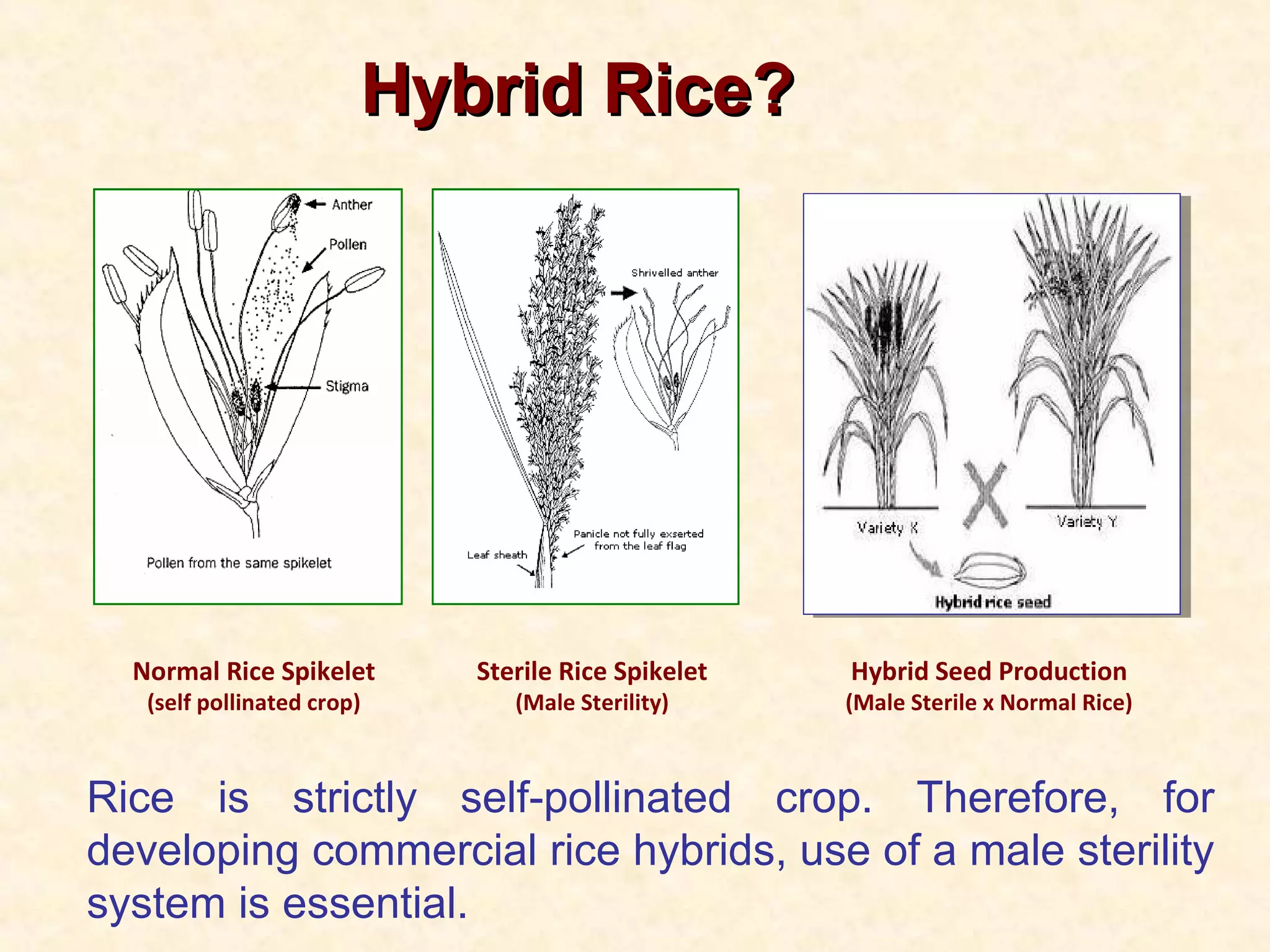The document discusses heterosis breeding in rice, focusing on the history, types, genetic and molecular bases of heterosis, and the hybrid seed production system. It highlights the significance of hybrid rice in meeting food demands in India, outlines male sterility systems required for hybrid production, and reviews various hybrid varieties released in India. Additionally, it notes the advantages and constraints of hybrid rice technology, emphasizing the role of environmental factors and genetic mechanisms in successful breeding practices.





































